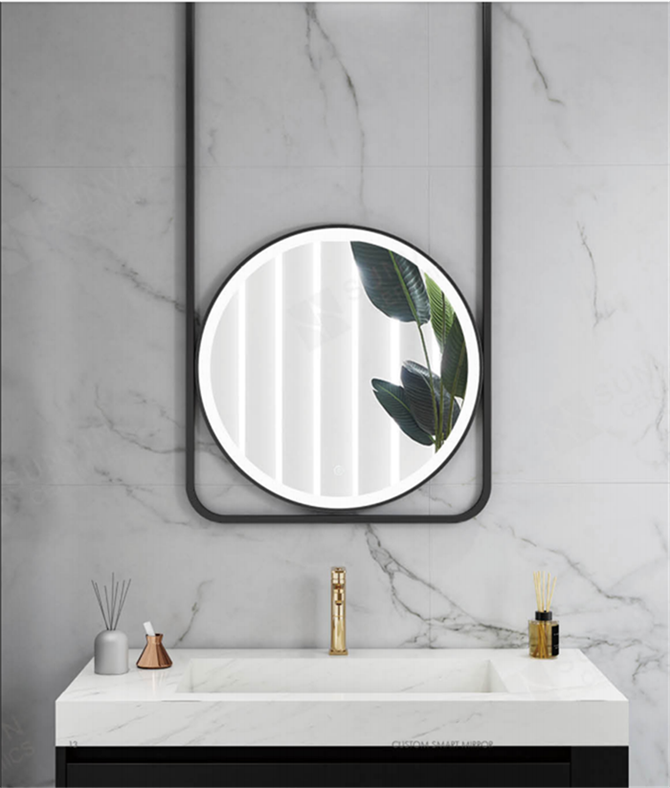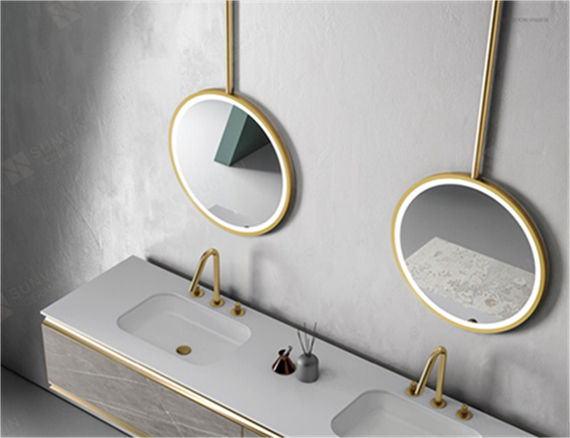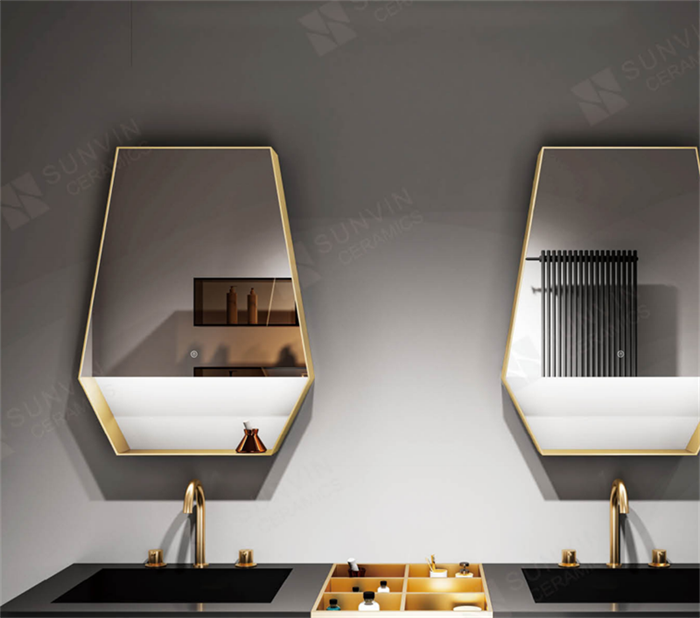As the market for smart home technology continues to expand, smart mirrors have emerged as a notable trend for 2024. These innovative devices offer more than just a reflection; they integrate high-resolution displays, intuitive touch sensitivity, and seamless compatibility with popular smart systems like Alexa and Google Assistant. For those looking to invest, understanding the key features that enhance user experience, such as 4K display quality and health tracking interoperability, is essential. Explore the essential aspects that make these mirrors a smart addition to modern households and discover how they can meet diverse consumer needs.
- Ensure high-resolution displays (minimum 1080p; 4K for premium models) for sharp, clear images.
- Prioritize seamless compatibility with popular smart devices and platforms, including iOS, Android, and Windows.
- Look for touch sensitivity and responsiveness features such as lag-free interaction, anti-fingerprint, and anti-glare coatings.
- Verify support for voice assistants like Amazon Alexa, Google Assistant, and Apple Siri for hands-free interaction.
- Choose mirrors with advanced sensors and connectivity features like Wi-Fi and Bluetooth for enhanced functionality.

Smart mirrors have rapidly emerged as a popular trend in both residential and commercial settings, revolutionizing the way people interact with reflective surfaces. These innovative devices combine traditional mirror functionalities with modern technology, offering a seamless integration of digital displays and connectivity features.
In residential environments, smart mirrors are increasingly being utilized in bathrooms and bedrooms, enhancing daily routines with real-time information such as weather updates, news, and personal reminders. This integration of technology into everyday objects aligns perfectly with the growing consumer demand for smart home solutions that enhance convenience and efficiency.
Commercially, smart mirrors are making significant strides in retail stores, fitness centers, and hospitality sectors. Retailers leverage these mirrors to offer virtual try-ons, allowing customers to visualize clothing and accessories without physically trying them on. In fitness centers, smart mirrors provide interactive workout sessions, tracking user performance and offering personalized feedback.
Hotels and spas incorporate smart mirrors to elevate guest experiences, providing tailored services and information at a glance. The adoption of smart mirrors across various sectors underscores their versatility and the broad appeal of integrating digital technology into traditional reflective surfaces. This trend signifies a transformative shift towards more intelligent and interactive environments.
At the core of smart mirrors' functionality lies a sophisticated fusion of advanced sensors, display technologies, and connectivity features that transform traditional mirrors into interactive digital interfaces. These components collectively enable smart mirrors to offer functionalities far beyond mere reflection, enhancing both convenience and user experience.
Advanced sensors, such as motion detectors and cameras, play a pivotal role by capturing user movements and gestures, allowing for touch-free interaction. These sensors can also monitor environmental conditions like lighting and temperature, adapting the display settings accordingly.
Display technologies, including LCD, OLED, and augmented reality overlays, facilitate the presentation of digital information directly on the mirror's surface. This could range from time and weather updates to personalized notifications and multimedia content.
Connectivity features, encompassing Wi-Fi, Bluetooth, and integration with smart home ecosystems, further amplify the smart mirror's capabilities. This connectivity allows users to stream content, sync calendars, control smart home devices, and even receive real-time health analytics.
Together, these elements create a seamless blend of utility and innovation, making smart mirrors an invaluable asset in modern living spaces. Through these cutting-edge technologies, smart mirrors exemplify the convergence of practicality and futuristic design.
The global market for smart mirrors is poised for substantial growth, driven by increasing consumer demand for integrated smart home technologies and enhanced user experiences. According to recent market research, the smart mirror market is expected to reach a valuation exceeding $4 billion by 2024, reflecting a compound annual growth rate (CAGR) of approximately 10.4% from 2021 to 2024. This surge is attributed to the expanding adoption of smart home devices, the proliferation of the Internet of Things (IoT), and advancements in artificial intelligence (AI).
Key sectors contributing to this growth include residential, automotive, and retail. In residential spaces, smart mirrors are becoming indispensable for their multifunctionality, offering features such as health monitoring, virtual try-ons, and personalized content. The automotive industry is also witnessing increased integration of smart mirrors, enhancing safety and driving experience through features like blind-spot detection and rear-view cameras.
Geographically, North America and Europe currently dominate the smart mirror market, driven by high consumer awareness and technological adoption rates. However, the Asia-Pacific region is emerging as a lucrative market, propelled by increasing urbanization, rising disposable incomes, and growing interest in smart home technologies.

When investing in smart mirrors, retailers should begin by understanding the specific needs and preferences of their target consumers.
Selecting the appropriate mirror size and prioritizing display quality are important factors for enhancing user experience.
Additionally, ensuring the mirror's compatibility with various smart devices and platforms can greatly impact its functionality and appeal.
Understanding the key motivations driving consumer interest in smart mirrors is essential for retailers considering an investment in this innovative technology. The allure of smart mirrors primarily revolves around their ability to seamlessly integrate convenience, personalization, and interactivity into daily routines. Consumers are increasingly drawn to products that enhance their lifestyle, and smart mirrors offer a blend of utility and sophistication that meets these demands.
One of the primary motivations is the desire for a personalized experience. Smart mirrors can suggest outfits, display weather updates, and even provide health metrics, all tailored to the individual user. This customization appeals to a wide range of consumers, from busy professionals to tech-savvy millennials.
Additionally, smart mirrors serve as a hub for connectivity. They can sync with other smart home devices, enabling users to control lighting, music, and more from a single interface. This integration simplifies daily tasks and enhances the overall user experience.
Moreover, the aesthetic appeal of smart mirrors cannot be overlooked. Their sleek, modern design adds a touch of luxury to any space, making them a desirable addition for style-conscious consumers. Understanding these motivations helps retailers make informed decisions that align with consumer expectations and market trends.

Choosing the appropriate mirror size is vital for retailers aiming to meet diverse consumer needs and optimize space utilization. The size of a smart mirror can greatly impact its functionality and aesthetic appeal, making it important to take into account both the physical space where the mirror will be installed and the intended user experience.
Retailers should first analyze the dimensions of their retail environment and typical consumer spaces, such as bathrooms, bedrooms, and living areas. Large mirrors are ideal for expansive spaces, providing a full-body view and more inclusive smart features. In contrast, compact mirrors are suited for smaller areas, offering functionality without overwhelming the space.
Additionally, retailers must consider the aspect ratio and orientation of the smart mirror. Vertical mirrors are generally preferred for dressing rooms and bathrooms, while horizontal mirrors may be more suitable for living rooms or hallways. Understanding these spatial dynamics helps in selecting mirrors that seamlessly integrate into different environments.
It is also important to take into consideration the demographic and preferences of the target market. For instance, younger consumers may prioritize larger mirrors for full-length selfies, while older demographics might prefer medium-sized mirrors for practical daily use. By carefully choosing the right mirror size, retailers can enhance customer satisfaction and drive sales growth.
To maximize user experience and functionality, retailers must prioritize the display quality of smart mirrors. High-resolution displays guarantee a clear, sharp image, which is essential for tasks such as applying makeup, grooming, or even virtual try-ons. A minimum resolution of 1080p is recommended to deliver detailed visuals, although 4K displays are increasingly becoming standard for premium models.
Brightness and contrast levels also play a significant role. Adequate brightness guarantees visibility in various lighting conditions, while high contrast ratios enhance the clarity of both text and images. OLED and QLED technologies offer superior contrast and more vibrant colors compared to traditional LED displays, making them a valuable investment.
Additionally, touch sensitivity and responsiveness are key factors in enhancing interactivity. A lag-free, smooth touch experience is important for user satisfaction, particularly for applications requiring frequent input. Anti-fingerprint and anti-glare coatings further improve usability by maintaining a clean and clear display.
In addition to prioritizing display quality, guaranteeing the mirror offers compatibility with various smart devices and platforms is essential for maximizing its utility and user satisfaction. Retailers should seek smart mirrors that seamlessly integrate with popular operating systems such as iOS, Android, and Windows. This compatibility facilitates effortless connectivity with users' smartphones, tablets, and other devices, allowing for a more streamlined and interactive experience.
Moreover, smart mirrors should support interoperability with widely-used voice assistants like Amazon Alexa, Google Assistant, and Apple Siri. Integration with these platforms can enhance user engagement by enabling voice-activated commands, thereby offering a hands-free, personalized interface. This feature is particularly valuable for tasks such as adjusting lighting, accessing calendars, or playing music.
Additionally, compatibility with fitness and health tracking apps can greatly expand the smart mirror's appeal. By syncing with applications like Apple Health, Google Fit, and other specialized fitness software, the smart mirror can provide users with real-time health metrics and exercise routines. This not only adds value but also positions the product as a versatile tool for health-conscious consumers.
Ultimately, investing in smart mirrors with robust device and platform compatibility guarantees a versatile and future-proof product that meets diverse consumer needs and preferences.
Just as a lighthouse guides mariners through turbulent seas, the judicious selection of smart mirrors illuminates the path to enhanced user interaction and satisfaction in 2024.
High-definition screens, smooth touch sensitivity, and compatibility with smart ecosystems serve as the keystones of this technological advancement.
Retailers charting the smart mirror market must anchor their investments in these foundational elements to guarantee a harmonious and prosperous voyage into the future of smart living.